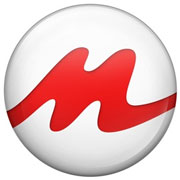
Open source technology is central to Morphlabs’ business model.

The company, launched in 2007 with Yoram Heller as a cofounder, builds fully modular, scalable public and private cloud products. It takes open source software and designs architecture to run on specific hardware.
Building its products on top of open source software is the main innovation that allows Morphlabs to dramatically lower the barrier of entry to cloud computing. For example, using Morphlab’s technology, public cloud service providers can realize 60 percent margins while still competing toe-to-toe with Amazon/AWS.
Helping to effectively compete against cloud giant Amazon is the battle cry that Heller, vice president of corporate development at Morphlabs, asserts in describing his company’s marketing mission. He sees his company’s battery of cloud products as weapons to counter, if not overtake, Amazon’s tight control of the cloud turf.
Eucalyptus was the only open source project dedicated to building AWS-compatible private and hybrid clouds when Morphlabs started making software for the clouds,” Heller told LinuxInsider.
The Eucalyptus Project was the only thing around but was not really much of an open source project, he noted. Heller views it as more of the source for a fork that the OpenStack Project created.
In working with service providers for cloud computing, Morphlabs looks at two main factors, according to Heller. One is the cost to run it. The other is the performance level the configuration provides.
In this interview Yoram Heller discusses the rise in market share for open source in the cloud, and how his company harnesses open source technology to compete with Amazon as a financially viable open source operation.
LinuxInsider: Describe the market in terms of competition that led you to see an opening for what Morphlabs offered.
Yoram Heller: When we started, there was no open source alternative to Amazon. If you look at the market, Amazon was first and defined the private cloud space. Then there was VMware that was dominating the enterprise space. There needed to be an open source alternative, and a couple of players stepped up.
You saw Eucalyptus amd then CloudStack, which I think was architected incorrectly. Finally came OpenStack as the one which was most open, had the support of the community and had the support of the developer.
LI: How much of its own proprietary software has Amazon relied upon to build its cloud architecture beyond pure open source?
Heller: I can not speak to what Amazon’s technology is. They generally utilize a bunch of open source. Anybody you go to today who operates on a massive web scale, the only way to do that effectively is to utilize open source. As you and I know, it is not just for the cost. Most of the innovation is there in terms of the infrastructure.
LI: How have your clients and potential customers reacted to your reliance on open source rather than proprietary products?
Heller: I think that depends on whether you are going after the enterprise market or the service provider market. I have found at this point the service providers are more than comfortable with open source. Enterprise is as well. Linux is obviously the most deployed OS out there. I do not think we need to do any convincing about using open source in that regard, to tell you the truth.
LI: In developing your product line, have you relied mostly on open source or ventured into building with your own code added onto your starting platform?
Heller: We release most of our code back to the community, especially what we have done with OpenStack. We also have written Puppetmodules, which allow for easy deployment.
However, the interface that we have is our own proprietary software. We believe that open source is not always the best way to design. That is something that we built ourselves. That being said, we adhere to open standards with our APIs. Everything is accessible from the API. The user interface that we built is really just a stable representation of that.
LI: What do you see as the driving points for your market space?
Heller: The service providers are just looking for a way to compete effectively with some sort of a strategy to stop the bleeding as quickly as possible. To get something like that done, what is necessary is an alternative.
That being said, open source seems like it is easy to do. It is almost the best marketing for the open source companies. It takes a lot of work, however, and a lot of technologies have to be integrated to deliver a product that gives you what you need it to do in the market.
LI: What level of growth have you seen in companies adopting the open source model in the years you have been developing Morphlabs?
Heller: In open source frameworks, I think OpenStack is the fastest growing project ever. It has completely taken off. It is almost faster than what most people expected. In terms of that, open source’s growth has been pretty tremendous.
LI: What challenges have you confronted in using the open source model?
Heller: I have been involved with open source for the last 15 years. For us starting out, the quality of the software just did not get to where we needed to get to. They [Eucalyptus Community members] were not accepting code within the community, which was pretty difficult. But with OpenStack it has been pretty smooth sailing. We are very excited about the progress and the strong community support.
LI: What makes open source projects financially viable?
Heller: That depends. You have several variations of open source. For instance, there is the support model which you get from Ubuntu. You have what Red Hat does, which is a little bit different with its Red Hat Enterprise Linux. Then there is the open core model with its GPL license, which MySQL did very well. And you have what we do, which is taking various open source technologies and productizing them into something different. We are actually obfuscating a lot of the technology away so you do not see the complexities — so you do not see what you are utilizing.
LI: Where do you see open source technology headed over the next five years?
Heller: We do not believe that there is a way to beat Amazon by building a second Amazon. We want to enable — and it is our vision as a company — guerrilla warfare against Amazon. So imagine if they were a nation state. We want to arm hundreds if not thousands of providers to have the servers to compete effectively against Amazon.
LI: What is your battle plan for that to happen?
Heller: We focus on the service provider. We believe that the service provider market has been intimidated by Amazon. They [Amazon] totally changed the game for everybody. Right now most service providers lack the time, the technology, the skill set or the people to compete effectively.
LI: How can you change that?
Heller: What we aim to do is be their [technology providers’] technology partner. We offer subscription software and target designs for hardware. We provide what we call hyperdensity. This allows us to put 100 Virtual Machines in a single node. This brings the cost per VM, including software and hardware, down to about US$15 per CPU per month. That is what Amazon sells for $46 per month. The performance is about five times faster. We think we are meeting a need that exists in the market. We are seeing a tremendous amount of attention.





















































